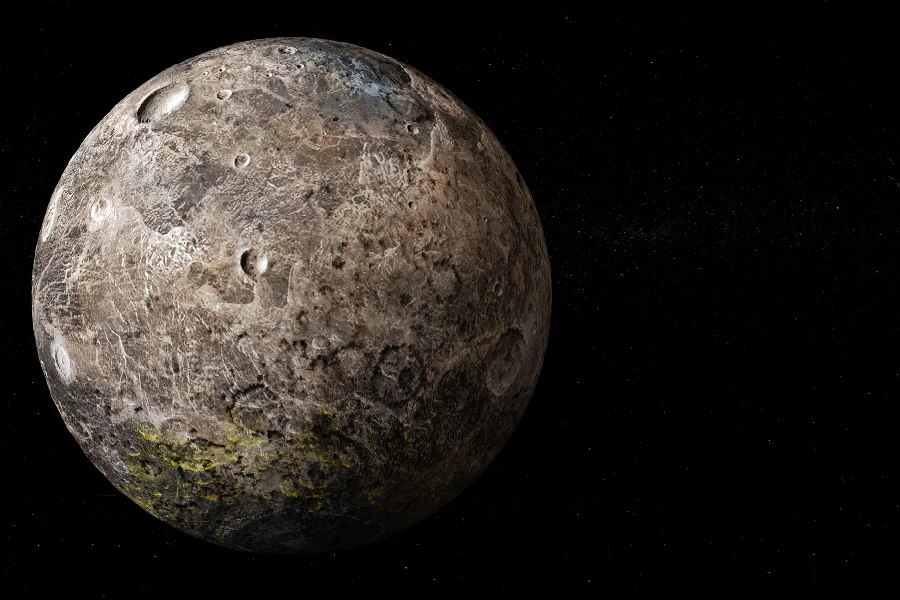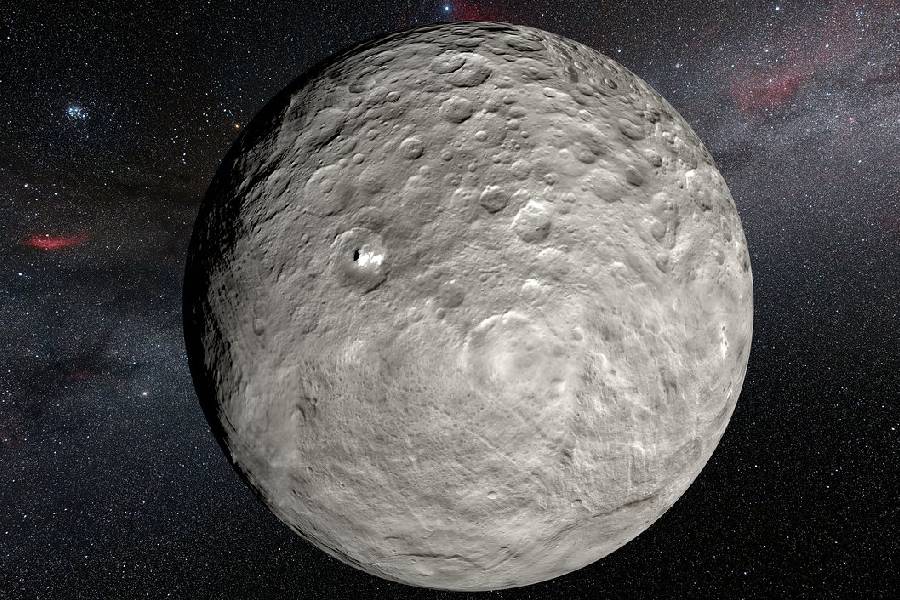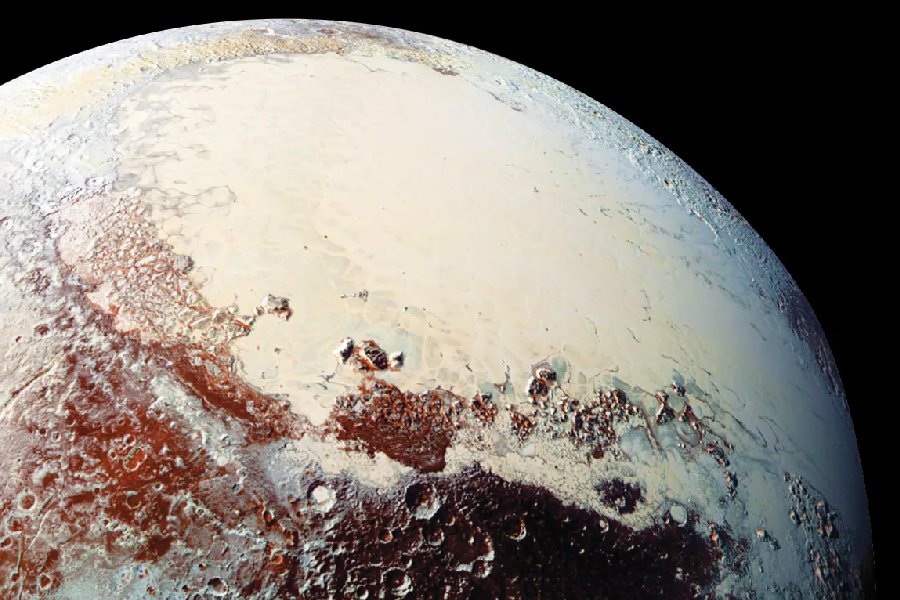Our solar system contains many celestial bodies, including the eight familiar planets most of us learned in school. But in recent decades, astronomers identified a new class of objects – dwarf planets. These small, mysterious worlds stirred debate about what constitutes a real “planet”.
But what kicked off this category of diminutive planetary bodies? Finding the first such object opened debates that resonate today. This article uncovers what dwarf planets pioneered new perspectives.
In 2006, the International Astronomical Union created an official dwarf planet category. Today, we have a number of dwarf planets, including Ceres, Makemake, Pluto, Haumea, and so on. But what was the first dwarf planet discovered?
When Pluto was found, it was considered to be the 9th planet in our solar system due to its size, mass, and orbital path around the Sun. However, over time, more objects with similar sizes and orbits to Pluto were discovered in the outer Solar System, like Eris in 2005, which appeared to be bigger than Pluto.
Let us look back at the timeline of how this one planet lost its status as a regular planet to become the very first dwarf planet to be discovered in our solar system.
What Was the First Dwarf Planet Discovered?
What was the first dwarf planet discovered? The first dwarf planet discovered was Ceres, spotted in 1801 by Italian astronomer Giuseppe Piazzi. Originally considered the first asteroid, Ceres orbits between Mars and Jupiter as the largest object in the asteroid belt.
However, its spherical shape and geological evolution later led it to be reclassified as a dwarf planet in 2006 when Pluto was controversially demoted. With a diameter of about 583 miles, Ceres makes up approximately one-third of the asteroid belt’s total mass.
The NASA Dawn spacecraft visited the dwarf planet Ceres in 2015 because it is the closest such body to the Sun. On arriving, Dawn found tantalizing evidence that Ceres could support life – including surface water ice, organics, and signs of past hydrothermal activity.

Discovery of Ceres (1801)
There are three main criteria established by astronomers for an object to be classified as a dwarf planet – and Ceres meets all three.
First, a dwarf planet needs to orbit the Sun, which Ceres does, circling the Sun in the asteroid belt between the orbits of Mars and Jupiter.
Furthermore, the object must have sufficient mass and gravity to achieve a nearly round shape. With a diameter of 583 miles, Ceres is large enough that gravity has pulled it into a spherical form.
Lastly, a dwarf planet has not cleared its orbital neighborhood region of other objects over time. The asteroid belt still contains millions of objects orbiting alongside Ceres, ranging greatly in size. So unlike planets which are gravitationally dominant, Ceres shares its orbital area with many neighbors.
By satisfying all three dwarf planet qualification criteria – orbiting the Sun, gravitational rounding, and not clearing its orbital zone – Ceres stands as the first dwarf planet found in our solar system. This contrasts its identification as an asteroid for much of history before dwarf planets were defined.
Historical context
The timeline of key events in the discovery and changing status of Ceres is an interesting one. Ceres was first detected in 1801 by astronomer Giuseppe Piazzi. Making it the very first dwarf planet identified, though the dwarf planet category did not exist yet.
Initially considered a new planet, Ceres was found orbiting between Mars and Jupiter. More objects being discovered in similar orbits led scientists to demote Ceres to asteroid status by 1851 as understanding of the Solar System continued to evolve.
Over 150 years after its initial discovery, Ceres had its status upgraded again in 2006 when astronomers created the dwarf planet category.
As the largest body in the asteroid belt between Mars and Jupiter and meeting the key criteria of orbiting the Sun, having sufficient mass to be nearly spherical, and not clearing its orbital neighborhood, Ceres earned promotion and recognition as the first dwarf planet humanity discovered within our solar system.
Features of the First Discovered Dwarf Planet
Ceres orbits the Sun in the asteroid belt between Mars and Jupiter. Ceres was the first body discovered in this region. At first, Ceres was thought to be the predicted “missing planet” that should exist between Mars and Jupiter based on the Titius-Bode law for planetary spacing.
With a diameter of 583 miles, Ceres is by far the largest object in the Asteroid Belt. It comprises about one-third of the belt’s total mass. Being large enough to have sufficient mass and gravity, Ceres is pulled into a spherical shape.
Spectral analysis of Ceres reveals similarities to carbonaceous chondrite meteorites in composition. This indicates Ceres likely has a rocky core overlaid by water ice and other volatiles.
While large, Ceres has not cleared its orbit zone of other celestial objects. It shares its orbital area with millions of other asteroids ranging greatly in size. So, Ceres does not gravitationally dominate its orbital neighborhood. This helps qualify it as a dwarf planet rather than full planet.

Naming the First Discovered Dwarf Planet
The first dwarf planet discovered was named Ceres, after the Roman goddess of agriculture and harvest. This name was proposed by German astronomer Johann Bode shortly after Ceres was discovered in 1801. Ceres seemed an appropriate namesake for a body found in the region between Mars (god of war) and Jupiter (king of gods).
By drawing on Roman/Greek mythology for a name, Ceres followed the tradition already established for the planets in our Solar System. This placed the new discovery into established naming conventions and reinforced connections between Western society and astronomy.
As goddess of agriculture and fertility, Ceres embodied renewal, cycles, and productivity on Earth. This is connected to the dwarf planet Ceres, which holds materials for life. Such materials are water ice and organics within the wider fertility of the asteroid belt. The name reflected an emerging understanding of Ceres’ astrophysical nature.
Characteristics of the First Dwarf Planet – Ceres
As mentioned several times above, Ceres has a diameter of about 583 miles, making it by far the largest celestial body in the asteroid belt. It is the only object in the asteroid belt large enough to be rounded by its own gravity, with an estimated mass of almost 9.38×1020 kg. Ceres rotates every nine hours and four minutes.
Ceres orbits the Sun every 4.6 Earth years. Its orbit lies between Mars and Jupiter, at an average distance of 267 million miles from the Sun. As the largest member of the asteroid belt, Ceres comprises almost a third of the total mass of the belt.
Based on its density, models indicate Ceres consists of a rocky core. The rocky core is overlaid with water ice and other volatile materials that could harbor organic compounds.
Sharing orbital space with countless smaller asteroids, Ceres is the largest asteroid. And with attributes like hydrostatic equilibrium and lack of orbital dominance that qualify it as a dwarf planet, Ceres also holds dual designation as both an asteroid and a dwarf planet circling the Sun.
Pluto – The First Trans-Neptunian Dwarf Planet
In 1930, Pluto was discovered by American astronomer Clyde Tombaugh at Lowell Observatory. Tombaugh systematically imaged the night sky and noticed a moving object. It was located past Neptune’s orbit, around 2.9 billion miles from the Sun. This new faraway, dim world was quickly named Pluto, after the Roman god of the underworld.
When discovered, Pluto was classified as the Solar System’s ninth planet. It remained the farthest known planet for over 75 years. Though much smaller than the other eight planets, Pluto’s planet status went undisputed until 2006.
In 2006, discoveries of multiple large objects similar to Pluto orbiting past Neptune led astronomers to create a new dwarf planet category. With more objects than just Pluto occupying that outer region, Pluto was redefined as a dwarf planet.
These icy, smaller worlds differ from full planets by not clearing their orbital paths around the Sun. The distant region Pluto inhabits is now known as the Kuiper belt. Pluto stands as the largest known of these icy inhabitants, and it is currently classified as a dwarf planet.

Conclusion
This article has uncovered what was the first dwarf planet discovered and who discovered it. Detected in 1801 between the orbits of Mars and Jupiter and over two centuries before Pluto’s detection, Ceres has undergone a complex history in terms of how scientists classified it as models of the Solar System evolved.
But with the recent ability to study smaller objects like Ceres and Pluto in greater detail, astronomers have defined the qualifications for dwarf planets. By orbiting the Sun, attaining hydrostatic equilibrium, and not dominating its orbital zone – Ceres meets all criteria.
And so, while its identity has shifted over the centuries from planet to asteroid, it can now rightly be recognized through improved understanding as the very first dwarf planet discovered. This has helped clarify our broader view of such objects in our stellar neighborhood.
Gaining better insight into Ceres illustrates the continuing expansion of our knowledge. This allows us to further appreciate the wonders of the Solar System and everything in it.
